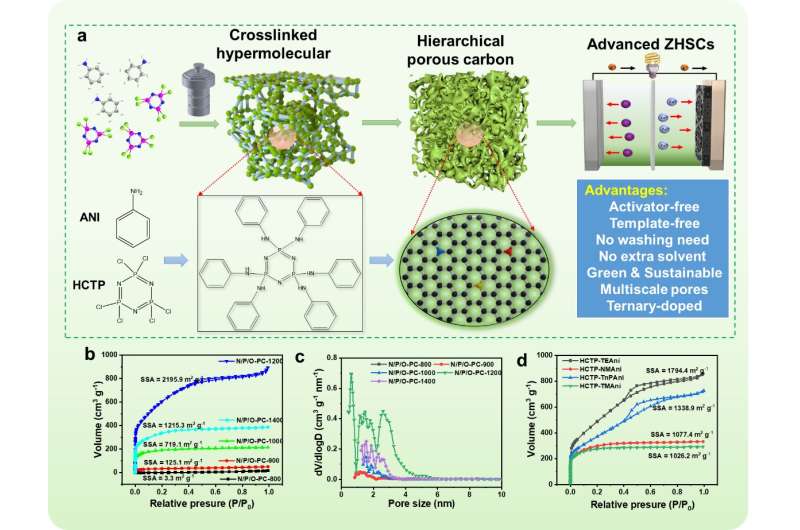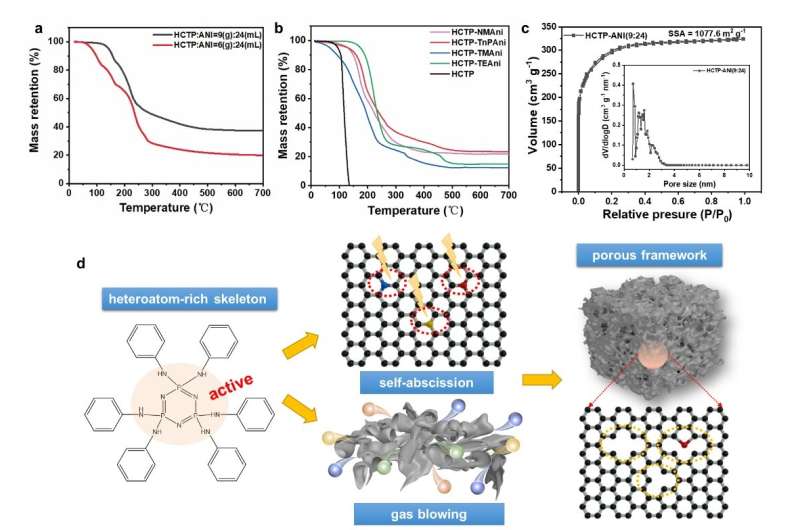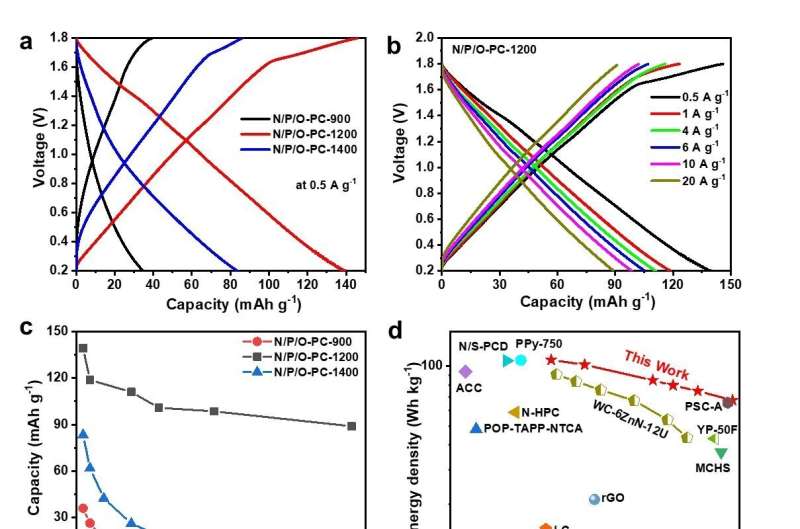Multiple-doped hierarchical porous carbons for superior zinc ion storage

Zn-ion hybrid supercapacitors (ZHSCs) with the integration of a battery-type anode and a capacitor-type cathode have received intense attention due to their relatively high energy density. Porous carbons (PCs) are promising cathode materials due to their earth-abundance, environmental-friendliness, and structural stability.
However, traditionally commercial activated carbon electrodes show undesirable storage capacity due to their unitary pore structure and insufficient active sites. The limited capacitive contribution of the activated carbon cathode is hard to match with the high capacity and kinetics of the Zn anode. Thus, the bottleneck is to design and construct advanced PC cathodes for high-performance ZHSCs
Pore engineering, nanostructured design, and heteroatoms doping are efficient strategies to improve the electrochemical activities of PCs. However, the fabrication processes are generally based on indirect carbonization of precursors with demand of activations and templates.
The extensive usage of activation agents and templates leads to complicated preparation procedures, time-consuming and hazard washing process, which fail to balance the environmental issues and their targeted electrochemical properties. Moreover, most heteroatoms-doped PCs are obtained uncontrollable regulation procedures and arbitrary distribution of heteroatoms, leading to difficulties in understanding the relationship of specific heteroatom configuration and Zn ion storage capability.

Thus, it is urgent to purpose a sustainable and controllable strategy to engineer carbons with targeted structural and compositional properties toward ZHSCs.
A recent study by Prof. Chuan Wu and Prof. Ying Bai (Beijing Institute of Technology) proposed a novel material fabricating strategy based on molecular engineering that highly porous carbon with multiscale pore structure and multiple heteroatoms doping can be effectively fabricated without any pore makers (templates or activation agents).
This study showed that constructing high-active multiple-heteroatoms-rich hypermolecule with N/P-rich molecular main chains and N-rich branched units can in-situ realize N/P/O-doped, micro-/mesopore-interconnect PCs (N/P/O-PCs) with large SSA over 2000 m2 g-1.
Such a strategy is general for highly porous carbon design, as evidenced by the resulting high specific surface of varied PCs obtained with the same strategy. According to the TG curves and pore structure information of the carbons obtained under high addition ratio of the branched units, the enhanced crosslinking degree led to lowered porosity of the carbons, showing the importance of the rational crosslinking structure of the precursors.

Combined with pore structure under different carbonization temperature, the possible pore formation mechanism was obtained. A relatively high temperature combined with high-active hypermolecule contribute to enough self-activation energy for self-abscission of the active heteroatoms and self-removing unstable heteroatoms-closed carbon atoms from the carbon skeleton, generating massive vacancies or micro/mesopores.
While low self-activation energy (low temperature) and high crosslinking degree both result in poorly developed pore structures, the abundant blowing gases may induce large cracks or pore channels within carbon matrix. Consequently, these active structural/compositional features endow the optimal cathodes with outstanding storage capacities of 139.2 at 0.5 A g-1, high-rate performance (88.9 mAh g-1 and 20 A g-1), superior energy/power densities, and long cycling stability (nearly no capacity degradation for 10000 cycles at 5 A g-1) for aqueous ZHSCs. Theoretical calculation confirms synergetic effects of multiple-atoms-doping on enhancing electronic conductivity and reducing energy barrier between Zn ion and carbon, promoting Zn ion adsorption capability.
"These findings shed fresh light on straightforward manufacturing of superior HD-HPCs for electrochemical energy storage," Prof. Chuan Wu said, "We believe such a strategy can be broadened to design carbon materials for different applications that are not limited by ZHSCs."
The research was published in Science China Materials.
More information: Mingquan Liu et al, Molecular engineering toward sustainable development of multiple-doped hierarchical porous carbons for superior zinc ion storage, Science China Materials (2022). DOI: 10.1007/s40843-022-2176-6
Provided by Science China Press





















